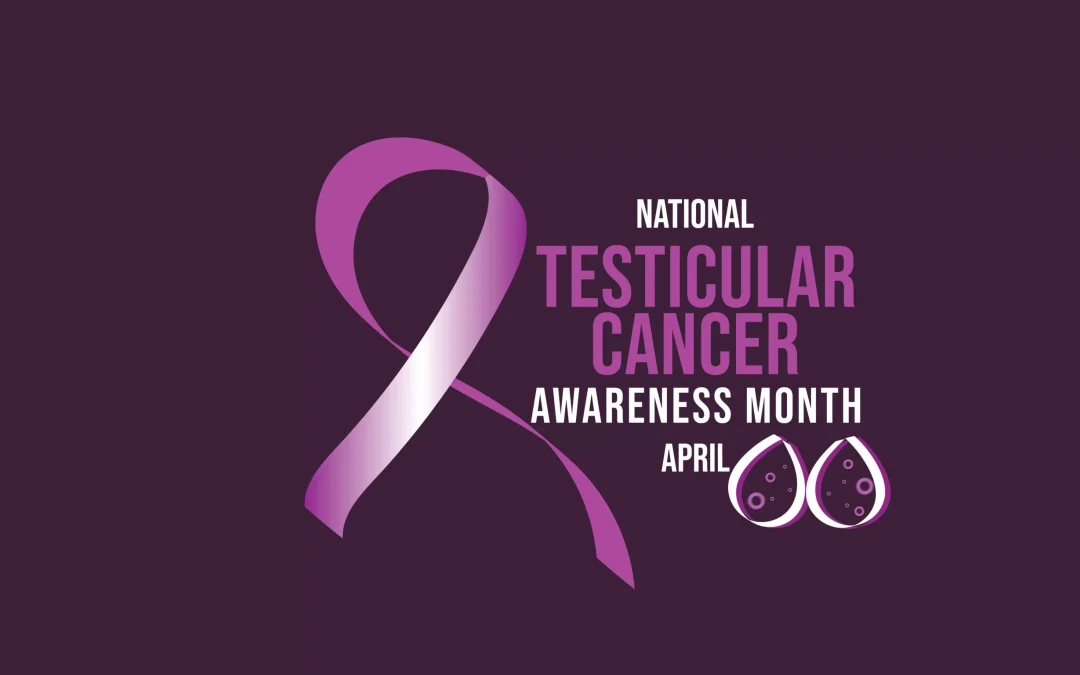April is Testicular Cancer Awareness Month
Know the Facts. Protect Your Health.
Testicular cancer may be rare, but it is the most common cancer among young men aged 15–35. The good news? It’s also highly treatable and often curable, especially when detected early. This month, we’re focusing on education, early detection, and breaking the stigma around men’s health and self-advocacy.
What Is Testicular Cancer?
Testicular cancer occurs when abnormal cells grow in one or both testicles—usually starting in the sperm-producing germ cells. It can develop at any age but is most commonly diagnosed in teens and young adult men.
There are two main types:
-
Seminomas – Slower-growing and highly responsive to treatment
-
Non-seminomas – Faster-growing, may require more aggressive treatment
Key Risk Factors
You’re at higher risk if you have:
-
Age: 15–35 years old
-
Family History: Especially first-degree relatives with testicular cancer
-
Undescended Testicle (Cryptorchidism): Risk remains even after surgery
-
Previous Testicular Cancer: Increases risk in the other testicle
-
Race & Ethnicity: Most common in white males
Common Symptoms
Testicular cancer often begins without pain. Be alert to:
-
A lump or swelling in either testicle
-
A feeling of heaviness in the scrotum or lower abdomen
-
Sudden fluid buildup in the scrotum
-
Pain or discomfort in the testicle or groin
-
Breast tissue tenderness or enlargement (rare)
How to Perform a Testicular Self-Exam
Self-exams are quick and can be lifesaving:
-
Perform after a warm shower when skin is relaxed
-
Stand in front of a mirror and check for swelling
-
Gently roll each testicle between your fingers and thumbs
-
Feel for lumps, firmness, or shape/size changes
-
Report any abnormalities—even painless ones—to your doctor promptly
Diagnosis & Treatment Options
If a lump is found, doctors may use:
-
Ultrasound imaging
-
Blood tests for tumor markers (AFP, hCG, LDH)
-
Surgery (orchiectomy) to remove the affected testicle
Depending on the cancer type and stage, treatment may also include chemotherapy or radiation therapy. The survival rate for early-stage testicular cancer exceeds 95%.
Real-Life Story: Awareness Saves Lives
Jordan, a 29-year-old from Arlington, found a lump during a self-exam. It wasn’t painful, but he saw a doctor immediately. Days later, he was diagnosed with early-stage testicular cancer. After surgery and regular follow-ups, Jordan is now cancer-free.
He credits his self-awareness and quick action for saving his life—and encourages other men to do the same.
National Resources
-
Testicular Cancer Foundation – Education, survivor stories, and monthly reminder tools
-
American Cancer Society – In-depth info on diagnosis, treatment, and survivorship
-
Urology Care Foundation – Screening guides and men’s health resources
Local DMV Men’s Health Resources
-
Howard University Hospital – Men’s Health Services (Washington, DC)
Screening and education for underserved male communities
➤ Visit: huhealthcare.com -
Inova Men’s Health & Wellness Program (Northern VA)
Preventive care, testicular exams, and full screenings
➤ Visit: inova.org/services/mens-health -
⚕️ LifeBridge Health – Men’s Health Center (Baltimore, MD)
Urology services and testicular cancer education
➤ Visit: lifebridgehealth.org -
MedStar Health – Men’s Health Clinics (Across the DMV)
Full screenings and urology referrals available through MedStar practices
➤ Visit: medstarhealth.org
Protect Your Health—Know Your Body
This April, make time for awareness, action, and open conversations about men’s health. A monthly self-exam takes less than two minutes and could save your life.
Dr. Bertrand Fote, MD, MBA, FACEP, CF²
Emergency Medicine Physician | Physician Leader | Advocate for Community Health & Wellness

